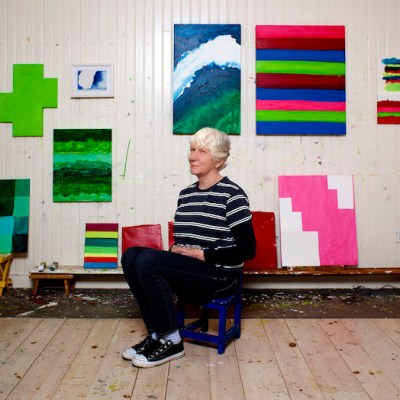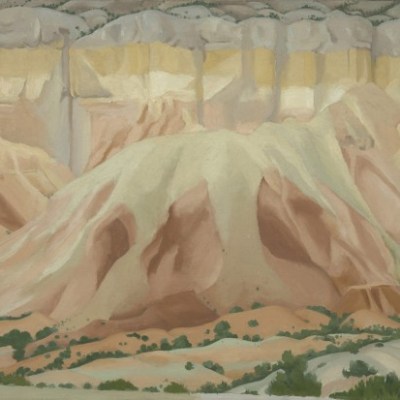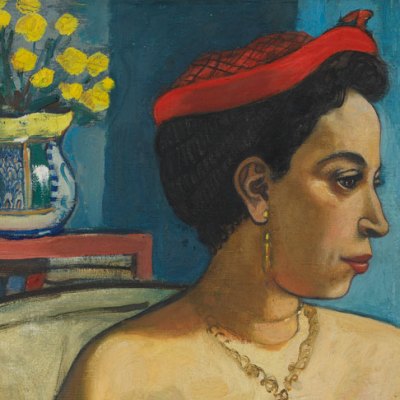‘Why talk when you can paint?’ Milton Avery (1885–1965) would say when asked to make statements about his work. The quality of settled calm confidence that underlies this remark shines through equally in the 16 paintings and works on paper in Victoria Miro’s new exhibition of Avery’s work, the first to be held in London for a decade. The works included in the exhibition span more than 30 years of enchanted lyricism and painterly deftness, and they confirm Avery as one of the under-regarded heroes of American modernism.
Consider Wader (1963), a painting made in Avery’s eighth decade. A blonde-haired woman in a red bikini walks towards the viewer, standing calf-deep in a gently running river which recedes to an invisible vanishing point behind her back. Behind her, the wooded mountains of the Catskills rise up against a red sky. It is an image of luminous energy and longing, at once dreamy and commonplace. It is also a masterpiece of improvised variety in mark-making: the surface of the water is built up in thick, loose brushstrokes, the river’s banks are decisively marked in long lines, and the texture of the canvas board is liberally allowed to show through the muted layer of red that makes up the sky, so that form and matter seem to be magically at one.
Morning Sky (1964), Milton Avery. Courtesy The Milton and Sally Avery Arts Foundation and Victoria Miro, London. © The Milton and Sally Avery Arts Foundation

Although the works in the exhibition take the human figure, landscape or still-life as their point of departure, several of them come close to abstraction. In Morning Sky (1962), a painting made during one of Avery’s summers spent in Provincetown in the company of Mark Rothko, Barnett Newman and Adolph Gottlieb, the nature of Avery’s influence on the younger painters is clear, as beach and sea represented on the canvas resolve into broad fields of colour, with a muted pink butting onto a serenely stormy dark blue.
French Landscape (1953), Milton Avery. Courtesy The Milton and Sally Avery Arts Foundation and Victoria Miro, London. © The Milton and Sally Avery Arts Foundation

In Excursion on the Thames (1953), one of several pictures in the exhibition deriving from Avery’s only trip to Europe in 1952, the perfect balance is struck between loving observation of the everyday and visionary form-making: the pleasure boat slowly moving down the Thames, observed from the steps of the Tate at Millbank, is simultaneously two bands of vibrant colour glowing against the almost-black of the middle ground. The combination of darkness with serenity, contrast with balance, seems to come out of nowhere, in a manner characteristic of Avery’s unique position in American painting. ‘I never have any rules to follow,’ Avery told Art Digest in the same year that he made his European tour: ‘I follow myself.’ This exhibition triumphantly shows what a wise path that was to take.
Wader (1963), Milton Avery/. Courtesy The Milton and Sally Avery Arts Foundation and Victoria Miro, London. © The Milton and Sally Avery Arts Foundation

‘Milton Avery’ is at Victoria Miro, London, until 29 July.



